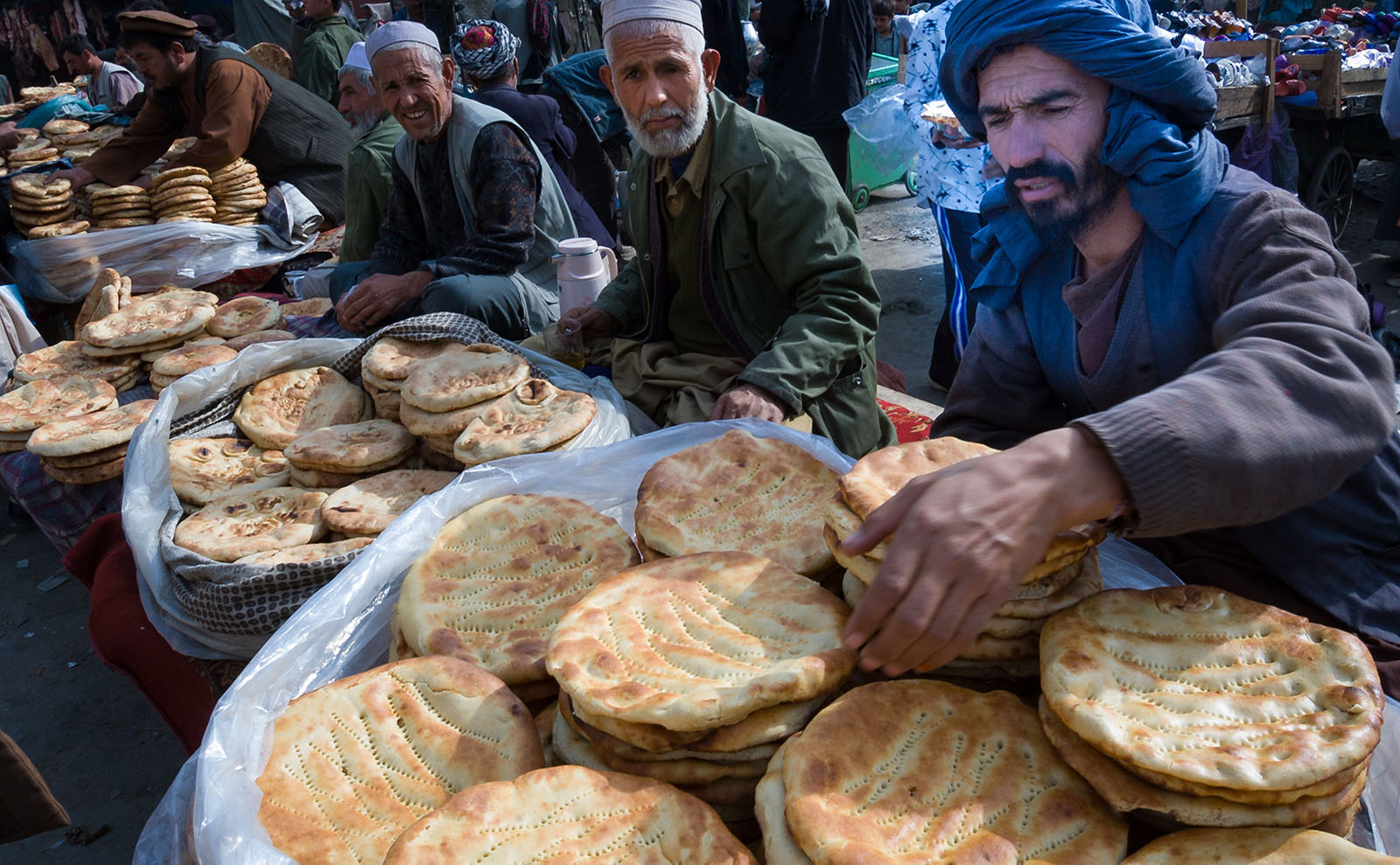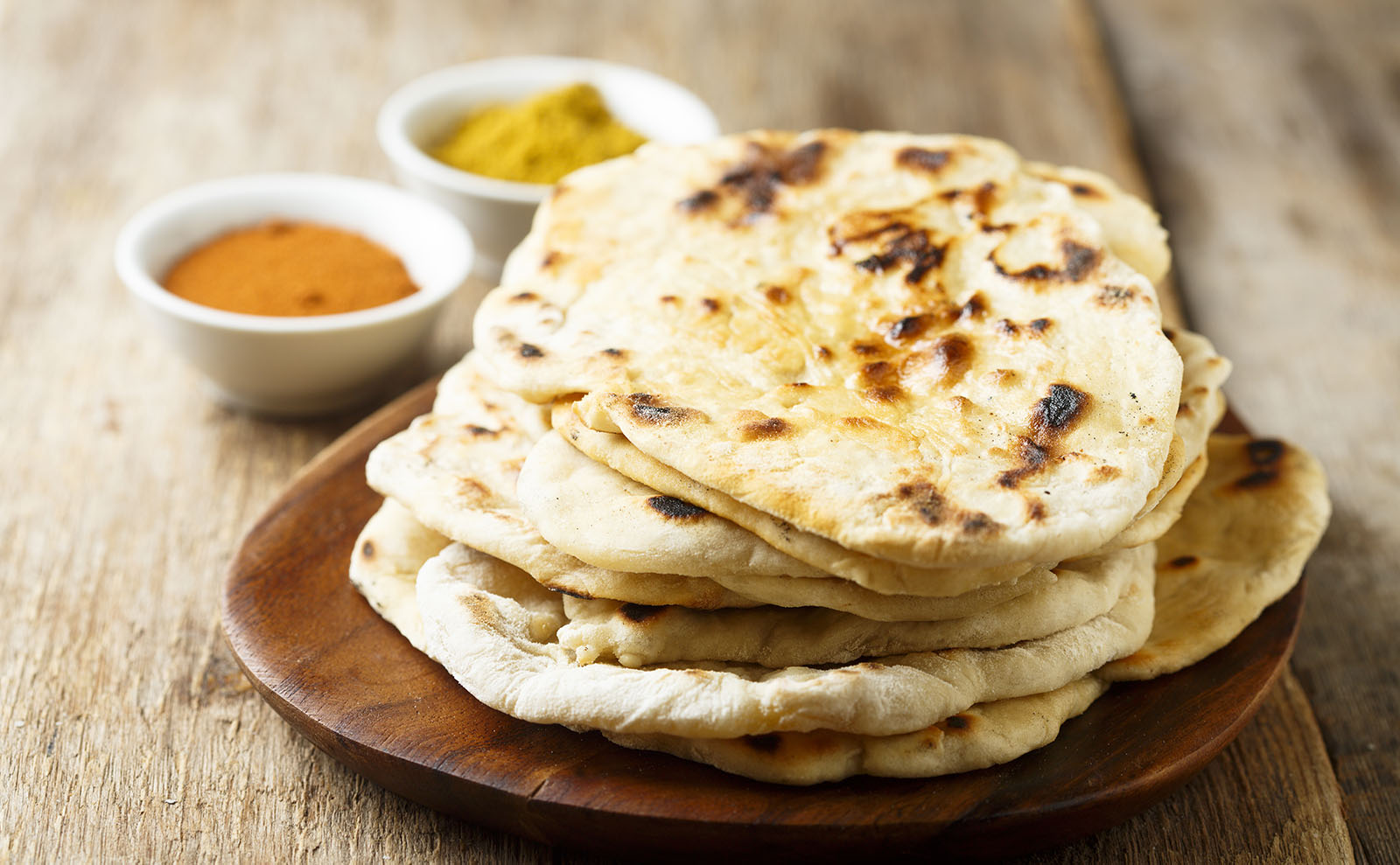
Armchair travel around the world!
Start your reading adventures with our FREE Reading Atlas.

- Around the World in 14 Books
- 7 Thrilling Book Series
- 6 Audiobooks That Are Like Theater For Your Ears



Food and drinks are some of the easiest ways — and the most fun— to vicariously experience another culture. When you add a great book to the mix, you've got the makings of a perfect evening. In Food+Fiction, we recommend a delicious read and a related recipe so you can try the taste of different destinations in your own kitchen.
This post is part of our Food+Fiction series.

A stroll through an Afghan market is a riot of colors and aromas. Jewel-toned spices mounded in baskets. Pyramids of pomegranates, melons, peaches, and apricots. Poultry and lamb ready to be cut on the spot. Kiosks serving sweet hot milk with a slice of cake. And the bread: steaming hot rounds of naan that smell of yeast and comfort.
Afghan cuisine is a delicious melding of flavors from its neighboring countries of India, Iran, and China. There are doughy dumplings stuffed with meat; stews seasoned with coriander, chilis, garam masala, saffron, or mint; rice pilaf dotted with raisins and carrots. It’s colorful and rich and spicy and assertive. Yogurt makes frequent appearances, and tea is an essential part of every meal and proper hospitality.
But the humble flatbread called naan is at the heart of Afghan meals and culture. Somewhat dense and chewy, naan is eaten at nearly every meal and snack. Members of a family literally break bread together while sitting crosslegged on a cloth spread on the floor. (Which, it’s worth noting, is also an excellent way to read a book and enjoy a snack.)
The inspiring nonfiction book The Dressmaker of Khair Khana tells the story of Kamila Sidiqi, a young Afghan woman who ran a successful sewing business and school in her home — and right under the Taliban’s nose. Although she eventually triumphed, her story begins with tragedy: The Taliban has seized Kabul, and her father, mother, and eldest brother have been forced to flee. Kamila suddenly finds herself responsible for her sisters and youngest brother. One morning, ‘after a breakfast of hot chai and toasted naan,’ she begins to formulate an idea that will change all of their lives.
In fact, in every book we read and recommended for our podcast episode about Afghanistan, the characters and real-life people in the stories eat naan. At loving family meals. During times of stress when there was nothing else to eat. While sitting comfortably at home, or pulled from a pocket while out adventuring. In every instance, the naan is a source of physical nourishment and a symbol of normalcy, family, and a commitment to living.
Traditional naan is leavened with yeast, and the dough is allowed to rise before being baked. It’s cooked in a very hot (480F/248C) tandoor, the dome-shaped clay oven used throughout central and southeat Asia. It can be dressed up with sesame or nigella seeds, fresh garlic, or fresh herbs.
Given that you probably don’t have access to a tandoor — Or maybe you do? We don’t know your life. — this recipe is cooked on the stovetop. And it’s ready in just 20 minutes or so, which means you can enjoy tender, steaming hot, buttery naan on a weeknight to make any meal feel just a bit more snuggly. (Or make some for a leisurely weekend breakfast.)
We’ve also included gluten-free and dairy-free recipe modifications; we made the modified version, and it works great.

Makes 8 pieces. Total time 25 minutes.
Gluten- & dairy-free: To make gluten-free, replace the all-purpose flour with your favorite gluten-free blend, then add 1 teaspoon arrowroot powder or potato starch. To make dairy-free, use Greek yogurt made from coconut milk.
Heads up! This dough freezes well. Follow the prep instructions, then freeze the uncooked balls of dough in an airtight container. When you’re ready to eat it, defrost the dough ball, roll it out, and cook.
Also! To make garlic naan, add 1/2 teaspoon garlic powder to the dough and add a crushed garlic clove to the melted ghee before brushing onto the bread.
Make the dough. In a large mixing bowl, combine the flour, baking powder, and salt; mix with a fork. Add the Greek yogurt and blend until combined. You may get to a point where you think there’s not enough yogurt; persevere! Keep mixing with a fork until it resembles clumpy sand, then use your hands to bring it together. It will eventually form a smooth dough.
Shape the dough. Use your hands to shape the dough into a ball. Lightly flour a board or countertop. Transfer the dough ball to the floured surface and sprinkle with a bit of flour. Use your hands to pat it into a rectangle shape and cut it into 8 equal pieces. Roll each piece into a disk about 5-6 inches in diameter, then gently stretch it into an irregular shape — teardrop or rough rectangle is nice.
Cook the naan. Head a large cast-iron skillet over high heat (or a nonstick skillet over medium-high heat) for 3-5 minutes. When it’s hot, add a piece of the flattened dough and cover with a lid. Cook until it’s got a few brown spots, about 3 minutes. Flip and cook another 2-3 minutes. Repeat until all the naan is cooked.
Big finish. Brush the top of each naan with a little melted ghee. Devour as-is alongside your favorite soup or stew; it’s lovely with Rogan Josh or Mulligatawny Stew. Or try some of the suggestions below.
A piece of freshly-cooked naan spread with a little ghee (and maybe sprinkled with salt) is sublime. But if you want to fancy it up a bit, these are tasty options.
Khair Khana, a northern suburb of Kabul, was home to a large community of Tajiks, Afghanistan’s second-largest ethnic group… Kamila hurriedly made her way down the dusty street, holding her scarf over her mouth to keep from inhaling the city’s gritty soot. She passed the narrow grocery store fronts and wooden vegetable carts where peddlers sold carrots and potatoes. Smiling, flower-laden brides and grooms stared down at her from a series of wedding pictures that hung from the wall of a photo shop. From the bakery came the delicious smell of fresh naan bread, followed by a butcher shop where large hunks of dark red meat dangled from steel hooks. As she walked Kamila overheard two shopkeepers trading stories of the day. — Gayle Tzemach Lemmon
The stories of Taliban control and abuses in Afghanistan are undeniable and objectively terrible. But this solidly researched, engagingly written reportage has a happier tale to tell. Meet Kamila Sidiqi, a young Afghan woman who ran a successful sewing business and school in her home — and right under the Taliban’s nose. {more}
This nonfiction reportage (256 pages) was published in March of 2011 by Harper Perennial. The book takes you to Taliban-ruled Afghanistan. Melissa read The Dressmaker of Khair Khana and loved it; it wouldn't be on our site if she didn't recommend it.
Bookshop.org is an online bookstore with a mission to financially support independent bookstores and give back to the book community.
Top image courtesy of timsimages.uk/Shutterstock.
Want to keep up with our book-related adventures? Sign up for our newsletter!
Can you help us? If you like this article, share it your friends!
Strong Sense of Place is a website and podcast dedicated to literary travel and books we love. Reading good books increases empathy. Empathy is good for all of us and the amazing world we inhabit.
Strong Sense of Place is a listener-supported podcast. If you like the work we do, you can help make it happen by joining our Patreon! That'll unlock bonus content for you, too — including Mel's secret book reviews and Dave's behind-the-scenes notes for the latest Two Truths and a Lie.
This is a weekly email. If you'd like a quick alert whenever we update our blog, subscribe here.
We'll share enough detail to help you decide if a book is for you, but we'll never ruin plot twists or give away the ending.
Content on this site is ©2024 by Smudge Publishing, unless otherwise noted. Peace be with you, person who reads the small type.